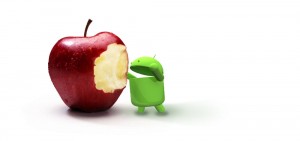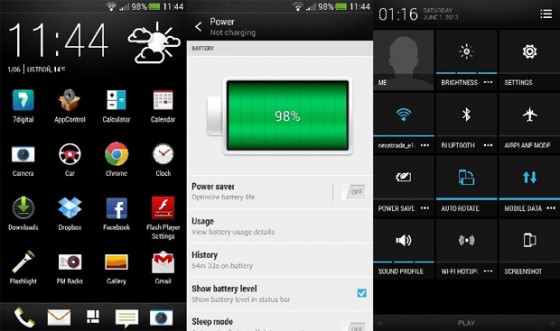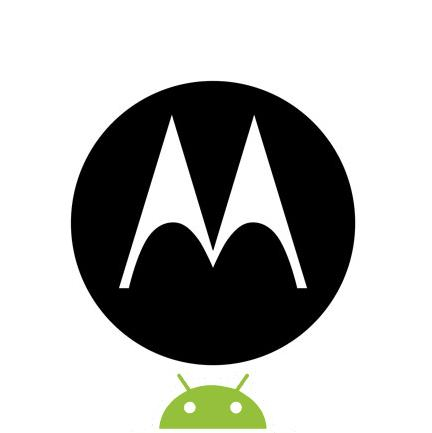Peter Wayner, technology writer, author, and iPhone developer was given a Nexus One to experiment with for a few weeks. In a lengthy but interesting article at InfoWorld, he detailed his experiences and impressions. The short version; Peter thought highly of Android. So much that he flat out states Android is a better tool for programmers and their enterprise employers than other devices on the market.
As with any other review, he starts with the obvious superficial comparisons but quickly moves to the meat of things:
The Android line is now competitive enough that the casual user may look at the two platforms and assume they’re twins. Both let you call people and fire up a number of apps by mashing your finger into one of an endless matrix of square icons. Both let you pull up Web pages. To my unsophisticated eye, the iPhone interfaces still look a bit prettier, but for most basic uses, iPhone and Android are as similar as Ford and Mercury or Coke and Pepsi.
…While iPhone developers have found that one path to success is playing to our baser instincts (until Apple shuts them down), a number of Android applications are offering practical solutions that unlock the power of a phone that’s really a Unix machine you can slip into your pocket.
It’s almost a given that anyone who talks about Android is going to mention the term open source. For the Android community, open source is second nature. Still, it gives a thrill when someone finally gets that it’s more than just tweaking functionality and realizes potential of open source.
Android’s relative absence of barriers was apparent again and again as I played with the Nexus One. At first I was a bit skeptical that anyone would do much with the open source license. Did it really make sense to reprogram the UI or the functionality if you’re just going to take a few calls and check email? But some folks are relentless tinkerers, and they’re building new Android distros. These are a long way from the Linux LiveCD ecosystem, but I can see this avenue being useful for an enterprise that wants to put a nice custom interface on top of Android hardware.
For the programmer, the advantages of the open ecosystem were apparent from the beginning. While it took me several days to get the keys sorted out when I first hooked up an iPod Touch to the Apple Xcode IDE, I actually got the “Hello World” test working on the Nexus One before I fired up the simulator. Eclipse just noticed the Nexus One was hooked up to my PC, then started up the code. I glanced over and my new app was just running.
Here is another place where Google’s approach is so much saner than Apple’s decision to wrap a nasty nondisclosure agreement around its SDK. As Apple would have it, programmers can’t talk to other people, such as bosses and investors, about the iPhone and iPad capabilities unless those folks pay the cash and join the developer program. And is it really possible to call something nonpublic if anyone with $99 can get a copy of the SDK? Is this really what the law means by taking reasonable precautions to protect the so-called trade secrets? Go ask Apple’s lawyers
Still there are issues. Namely Java being both blessing and burden, and the issue of fragmentation coming up yet again. Java’s far-reaching flexibility is a great thing for developers, but Peter found it a bit too unwieldy at times.
It’s also important to recognize that a wide variety of options need explicit permission, and you must declare this in the AndroidManifest.xml file. On several occasions, my code wouldn’t run simply because I forgot to turn on the permission to use the camera. Yet the error messages never said something like, “Go edit the manifest, doofus.” This configuration, by the way, is implemented with a precision that programmers will love but might leave end-users a bit befuddled. There’s one XML tag that enables the camera, while another enables the autofocus on the camera.
There are deeper issues that suggest how difficult it will be for Google to maintain consistency between the various phones. Some commenters at the Android marketplace have already developed a shorthand for buggy software that crashes: FC for Force Close. Some code that works on the Droid will “FC” on the Nexus One.
For the most part however, Peter seems to be genuinely won over by Android, though he isn’t giving up his iPhone just yet (emphasis ours).
This interaction with the cloud will be a question for the future. Right now, it seems that Apple won over the latte-sipping fashion plates who love the endless stream of cute games. Apple’s decision to court the game developers is paying off in some amazing titles, but the Android platform is a real workhorse. Anyone who wants to do more than play games will find a huge range of possibilities in the Android platform.
While Apple is reportedly fixing some of the worst problems with the App Store process, the Android world avoids most of them by giving people the freedom to use the platform as they want. Considering that people have been using this freedom relatively successfully with PCs for decades, it’s a welcome opportunity in the world of handhelds.
You can read the full article at Infoworld.
[Source Infoworld]










